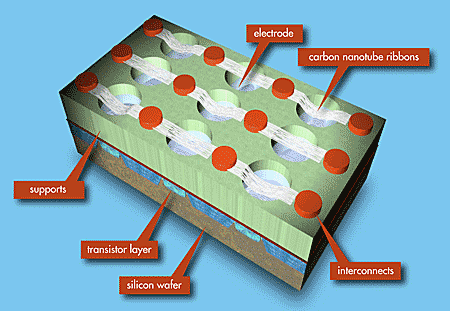Massachusetts-based Nantero has faced some challenges over the last decade in getting its carbon nanotube-based non-volatile memory to market. My colleague Philip Ross did a good job characterizing perhaps the biggest obstacle here in the pages of Spectrum over four years ago: “That instant-on computer that Nantero sketched out more than six years ago? You can buy one right now for just $400; it's called the iPhone.”
My contribution to that Spectrum article was to ask whether the tiny start-up really expected the big multinationals that are today’s flash memory manufacturers to just step aside and relinquish the market by letting Nantero essentially eliminate it.
Despite these challenges the company has remained steadfast in its conviction that its carbon nanotube memory would change computing, even in the face of having to sell off part of its company four years ago to Lockheed Martin. At the time, observers were really beginning to question the wisdom of
All of this may have changed significantly yesterday with the announcement of a joint development agreement with Belgium-based nanoelectronics powerhouse Imec to develop Nantero’s carbon-nanotube-based memory. Imec may very well be the needed slingshot.
“After review of the progress to date by Nantero and its manufacturing partners, we decided that this CNT-based non-volatile memory has multiple very attractive characteristics for next-generation highly scaled memory,” said Luc Van den hove, CEO of Imec in a press release. “By taking a leadership position in this area of development, in partnership with Nantero, we will be able to bring substantial benefit to our member companies.”
On its own Nantero had managed to bring its NRAM technology to the point where it was producing high-yielding 4 megabit arrays within CMOS production environments. Now with the NRAM arrays being manufactured, tested and characterized in Imec’s facilities, the aim will be to use the memory for applications below 20 nm, such as terabit-scale memory arrays and ultra-fast gigabit-scale nonvolatile cache memories, according to Jo de Boeck, CTO of Imec.
This is the kind of development that would have been welcomed by Nantero supporters many years ago. Even at this late date, it is still hopeful news for the fortunes of the company. But while flash memory has been the company’s great rival up until now, perhaps there are new ones in the shape of graphene-based flash memory that will form the competition in the future.
Dexter Johnson is a contributing editor at IEEE Spectrum, with a focus on nanotechnology.




